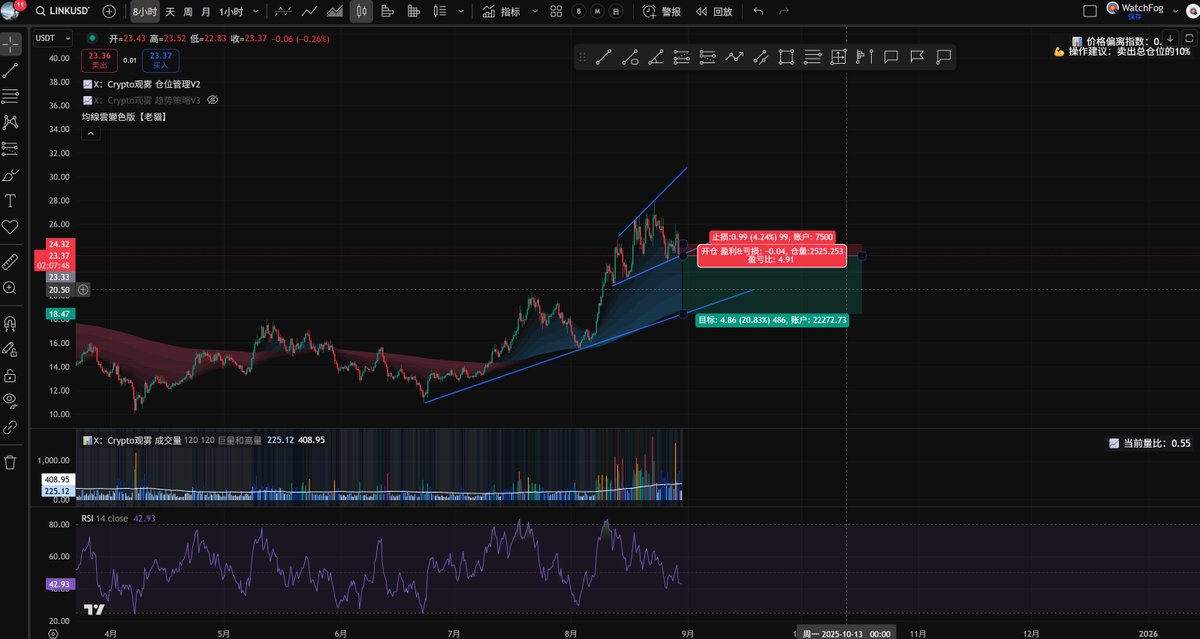Terra price
in EURCheck your spelling or try another.


About Terra
Terra’s price performance
Terra in the news

A few years after telling Terra/Luna investors that their funds were safe, Kwon admitted to misleading them.

Kwon Do-Hyung, known publicly as Do Kwon and co-founder of Terraform Labs, admitted guilt today...

Do Kwon previously had pleaded "not guilty" to multiple fraud charges earlier this year.

The US District Court for the Southern District of New York will hold a Tuesday...
Terra on socials

Guides

Terra on OKX Learn




Terra FAQ
Terra (LUNA) and Terra Classic (LUNC) are two independent blockchains resulting from the collapse of the Terra ecosystem in 2022. Terra is the new fork, while TerraClassic is the original blockchain.
Terra vesting refers to a mechanism implemented to control the trading of LUNA tokens received through airdrops until a specified date. The vesting period is in place to prevent users’ who were airdropped the Terra 2.0 token from dumping the tokens on the open market.
Easily buy LUNA tokens on the OKX cryptocurrency platform. Available trading pairs in the OKX spot trading terminal include LUNA/USDT and LUNA/USDC.
You can also swap your existing cryptocurrencies, including XRP (XRP), Cardano (ADA), Solana (SOL), and Chainlink (LINK), for LUNA with zero fees and no price slippage by using OKX Convert.
Dive deeper into Terra
Following its inception, the Terra 2.0 ecosystem has launched 44 distinct projects encompassing various sectors, such as finance, non-fungible tokens (NFTs), and gaming.
Terra is an open-source blockchain platform fostering an extensive ecosystem comprising decentralized applications (dApps) and developer tools. Leveraging the underlying Cosmos (ATOM) blockchain framework, Terra has achieved remarkable speed, positioning itself as one of the swiftest blockchains available, capable of processing up to 10,000 transactions per second (TPS).
The Terra team
Daniel Shin and Do Kwon launched the original Terra project in January 2018. As a result of the 2022 collapse, Do Kwon issued a revival plan that led to the creation of Terra 2.0 and Terra Classic blockchains. Now, Terra is a community-owned blockchain where decisions are reached via decentralized voting.
How does Terra work
Following the blockchain fork in May 2022, Terra embarked on a new journey known as Genesis, where the network was built from scratch. Terra’s primary objective is to construct a permissionless and borderless digital economy that can support the next wave of innovative financial products. Leveraging frameworks from the Cosmos blockchain, Terra has achieved a remarkable level of throughput, enabling high transaction processing capacity.
Terra maintains compatibility with the Cosmos ecosystem by retaining the Cosmos SDK (software development kit), empowering developers to create high-performance dApps on the Terra chain. To optimize and enhance the core functionality of the network, Terra employs a unique set of codes referred to as Mantlemint.
These codes enable Terra to deliver a fast and optimized experience, efficiently serving a substantial number of user queries. As outlined in the Terra white paper, a Mantlemint node is capable of performing three to four times more queries than a standard Secret Node.
In terms of consensus mechanism, Terra utilizes a distinctive approach called Tendermint, which relies on a proprietary Byzantine Fault Tolerant (BFT) Proof of Stake (PoS) infrastructure. This consensus mechanism leverages partially synchronous communication to ensure agreement among network participants, facilitating secure and efficient consensus within the Terra ecosystem.
The native token of the Terra 2.0 Ecosystem: LUNA
LUNA is the native token of the new Terra or Terra 2.0 blockchain. It is used for decentralized governance of the Terra 2.0 ecosystem. LUNA holders are given the right to vote on decisions that influence the future of the platform, making them stakeholders in Terra's ecosystem.
Disclaimer
OKX does not provide investment or asset recommendations. You should carefully consider whether trading or holding digital assets is suitable for you in light of your financial condition. Please consult your legal/tax/investment professional for questions about your specific circumstances. For further details, please refer to our Terms of Use and Risk Warning. By using the third-party website ("TPW"), you accept that any use of the TPW will be subject to and governed by the terms of the TPW. Unless expressly stated in writing, OKX and its affiliates (“OKX”) are not in any way associated with the owner or operator of the TPW. You agree that OKX is not responsible or liable for any loss, damage and any other consequences arising from your use of the TPW. Please be aware that using a TPW may result in a loss or diminution of your assets. Product may not be available in all jurisdictions.







































